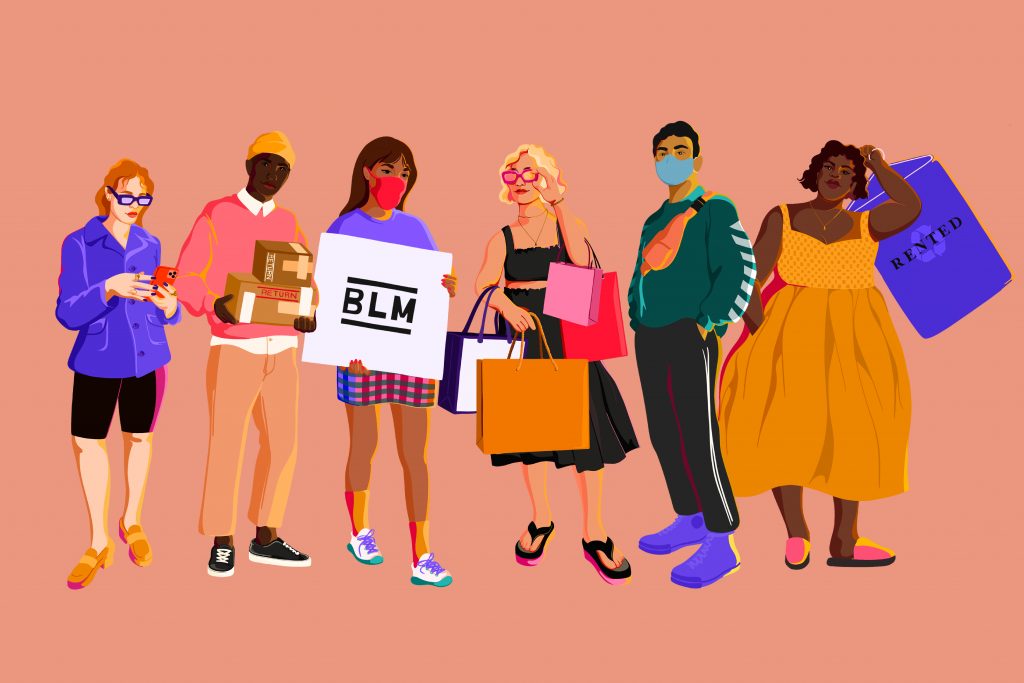
Generation Z (or simply Gen Z) is the cohort succeeding the Millennials and preceding Generation Alpha. Those born between 1996 and 2012 are considered to be a part of Gen Z and are also called Zoomers. Present-day teenagers and young adults form Gen Z.
Generation Z is a group of highly complex individuals without a doubt. They are the first generation to have access to the Internet and the online world. They tend to be well-behaved, abstemious, live more slowly, and are risk-averse in some developed nations, compared to their predecessors – the Millennials. However, they spend less time reading books.
As for their spending habits, teenagers earn, save and spend billions of dollars each year. It was revealed that teens spend over $84 billion dollars every year. Showing increased concern for financial stabilization, more teens are thinking about saving for their college education, and independent housing. Let’s take a look at their sense of style.

The Paradoxical Implications of Gen Z’s Clothing Choice
Shopping has evolved mightily since its dawn. The present-day availability of everything and the COVID-19 pandemic have affected the retail industry beyond measure. Teenagers are more likely to rely on shopping experiences rather than products or services. Looking beyond tangible products and actually trying to understand the company is their priority. Gen Zers’ buying habits span a wide horizon.
Zoomers like to document their shopping experience on Instagram. They also demand value, choice and quality when it comes to clothing, which can range from simplicity to outright puzzling. They are one of the biggest influencers of brand names. Gen Zers tend to be pragmatic about their choice of brand. Seamless interaction, transparency, authenticity, and relevancy are some of their expectations. The window of time for winning over this new and important generation is closing fast.
Teenagers these days want delivery as soon as possible. While offering same-day or even next day delivery is often a bit of a reach, it’s still important to do anything you can to get products in customers’ hands as quickly as possible. Pricing will still be sensitive, but they will be willing to pay for products. The appeal of the trendiest clothing worn by their influencers or peers also impacts teenagers’ decisions when it comes to fashion. This leads us to the next topic – fast fashion.
Fast fashion is said to be trendy, cheap clothing that causes pollution due to its bad methods of production. Examples include H&M and Forever 21. The majority of shoppers at fast fashion stores are Gen Zers living in first world countries. With this in mind, the awareness of this blinding industry cannot be overstated. Thus, it is extremely important for peers to make them understand the environmental implications of fast fashion.

Who Influences Teenagers to Buy What They Buy?
According to a study done by the University of Arkansas, friends or peers were revealed as the foremost factor in why teens choose their brands. This is because that is what they see on a day-to-day basis. They also found hobbies to be very influential especially in boys because of the symbolic nature of the brands. With television advertising proving to be less effective with technological advancement, clothing brands that want to target Zoomers are moving to use native content. Platforms such as Instagram, Twitter, and Snapchat are some of their advertisement priorities.
Speaking of which, social media (either directly or indirectly) has become a huge part of the fashion industry. Brands know that their target audience is on social media and want to be a part of the growing process. Providing an interactive experience and building an online presence are some of their main concerns. And for teenagers, who view social media round the clock, this is very impactful.
For example, a teenage girl of age 17 could be influenced by a fashion YouTuber like FashionByAlly and in turn purchase something that the influencer wears in their videos. This could definitely be a huge motivation boost for such teenagers.
A Brief Conclusion: Is Gen Z yet to be Catered to Fully?
Over the decades, there has been a shift in propagation. Now, the average fashion blogger can influence major designers via social media outlets. Coupled with a loyal young fan base, it furthermore amplifies the effect. This ensures that teenagers have a say in our society.
To conclude, the understanding of the current teenage mindset towards fashion is still poor. But what we know for sure is that they are highly capable individuals. Peculiar or simplistic, their sense of style may vary. Technology has expanded their horizon with the sea of information available.
Generation Z is to be the next generation of innovators.

